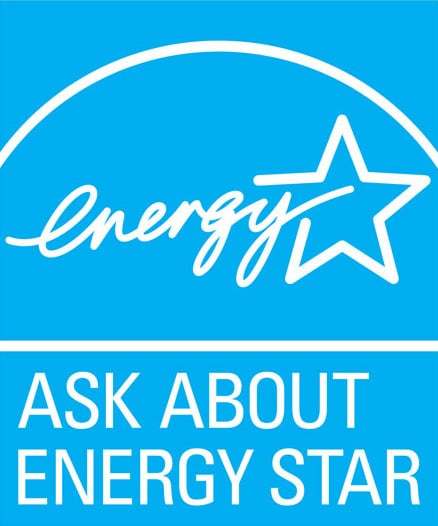America’s building industry is going green. This is thanks to a growing awareness of how our energy consumption affects global climate change, paired with the incentive of saving money on utilities. As everything from stadiums to commercial office spaces to homes are built greener, and with efficiency goals in mind, builders across the country are seeking energy-efficient building products.
Fortunately, today’s builders have access to an array of innovations and technologies that can help increase energy efficiency, including all-electric HVAC systems, ENERGY STAR®-rated, low-emissivity (low-E) doorglass and windows, and long-lasting LED light bulbs that use less energy than conventional bulbs. As dealers and distributors, you can reap the benefits of the energy efficiency movement by supplying products and materials to meet the fast-growing demand.
Some products may contribute more than others to lowering carbon footprints, but each one can help your customers achieve greater energy efficiency in their projects.
Doors and Windows and Home Comfort
The primary function of doors and windows is to merge homes’ interiors with the outside world. They can offer expansive views of the outdoors from the comfort of the conditioned indoor environment, or, on milder days, they can be propped open to allow fresh, outdoor air to circulate throughout the home. And, of course, they’re used as thoroughfares. One of their most significant roles, however, is letting natural light into the home.
But with sunlight comes heat. According to the U.S. Department of Energy, fenestration is responsible for up to 30 percent of a home’s heat gain and loss. Solar heat gain may be welcome in colder months since it can help warm up a space and reduce demands on the heating system. However, that same solar heat gain can be burdensome during the warm summer months for homeowners who don’t have insulated or energy-efficient glass in their doors and windows. Areas of the home that receive a lot of natural light can suddenly feel stiflingly hot, while less exposed areas of the home are much cooler. A variable-speed HVAC system, like today’s all-electric heat pumps, may be able to regulate a home’s temperature efficiently, but the millions of homeowners who still have traditional systems could see their energy bills increase. That’s because these less efficient systems are required to work harder and use more energy to regulate the inconsistency in temperature.
Thermal Performance
The thermal performance of doorglass and windows is measured by two properties: resistance to heat flow (expressed by the U-factor) and resistance to sunlight warmth (measured by the Solar Heat Gain Coefficient, or SHGC). When the values of both of these properties are low enough, the glass can qualify for ENERGY STAR certifications and help homeowners earn points toward other green building certifications.
One of the best ways to help homes achieve low values is to offer doorglass and windows finished with a low-E coating.
Low-E glass uses a microscopically thin, transparent coating that, when applied to doorglass and windows, reflects heat and reduces the glass’s ability to radiate energy. We tested the performance of our enclosed doorglass blinds paired with a triple-glazed low-E glass and found that this combination was able to reduce heat transmission by up to 28 percent!
In addition to the energy efficiency benefit, low-E glass also minimizes the amount of infrared and ultraviolet (UV) light that is able to pass through the glass. UV light is high energy and capable of causing chemical changes, including the discoloration of fabrics and other materials over time. So, by using low-E glass, homeowners are not only protecting their energy bills but also their belongings.
Increasingly, building code compliance requires knowledge of the U-factor and SGHC of a door and doorglass combination. The Certified Products Directory (CPD) listed on the National Fenestration Rating Council website lists the U-factor and SHGC of thousands of door and doorglass combinations but can be challenging to navigate. Our thermal performance database simplifies the process of determining the thermal performance of our doorglass by allowing filtering by size, function, doorglass type and type of low-E glass.
Why Energy Efficiency Matters
In addition to its effect on energy bills, each time a non-electric mechanical system or appliance is turned on within a home, it uses energy and, consequently, contributes to the rising carbon levels in the atmosphere that are the driving factor of global climate change. But energy efficiency doesn’t stop at appliances.
As we touched on above, every component of a home—from its lighting fixtures to its water heater to its front door—can play a big role in helping lower energy usage. That’s why, in an effort to minimize homeowners’ carbon footprints, the Department of Energy recommends builders adopt a whole-home systems approach to energy efficiency. Homes built with energy-efficient systems and materials use less power and can reduce the home’s contribution to climate change. This includes systems that operate on electricity rather than fossil fuels, and materials that optimize the home’s thermal performance by resisting solar heat gain.
Green and Beautiful
Some homeowners worry that pursuing a green home will limit their options for building materials, forcing them to choose between aesthetics and efficiency. At ODL, we believe there’s no reason that an energy-efficient home should have to compromise beauty or natural light. Many of our decorative doorglass designs can be purchased with low-E glass.
The low-E coating is so thin that it has no effect on the amount of visible light that enters the home to brighten and beautify. Your customers won’t be stuck with the choice between building green and building beautiful — they can do both.
ODL doorglass — both decorative and clear — can help your customers achieve greater energy efficiency in their projects, without any sacrifice to curb appeal or impact on natural light.
To learn more about the technical aspects of ODL doorglass, please visit our technical information page.
